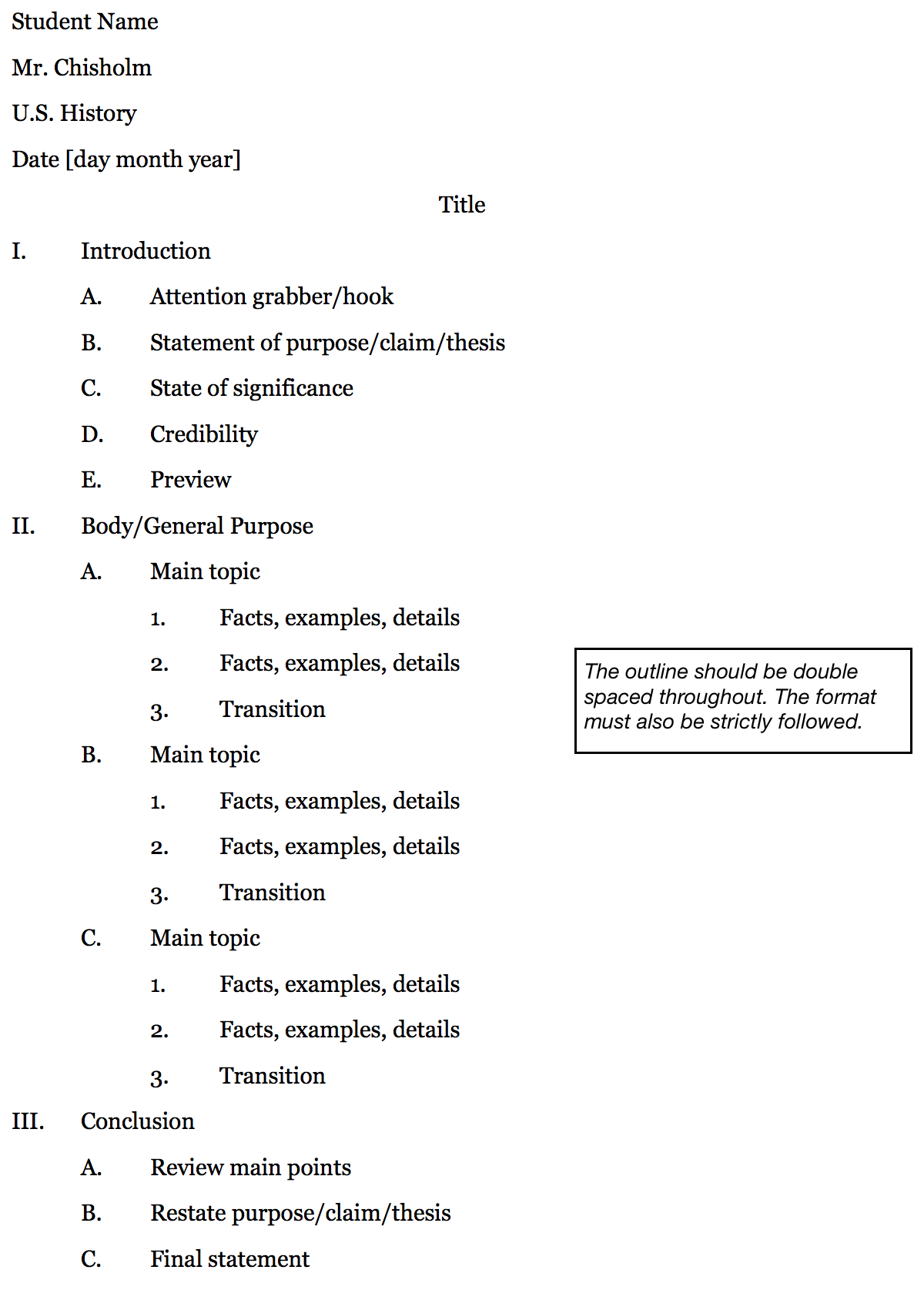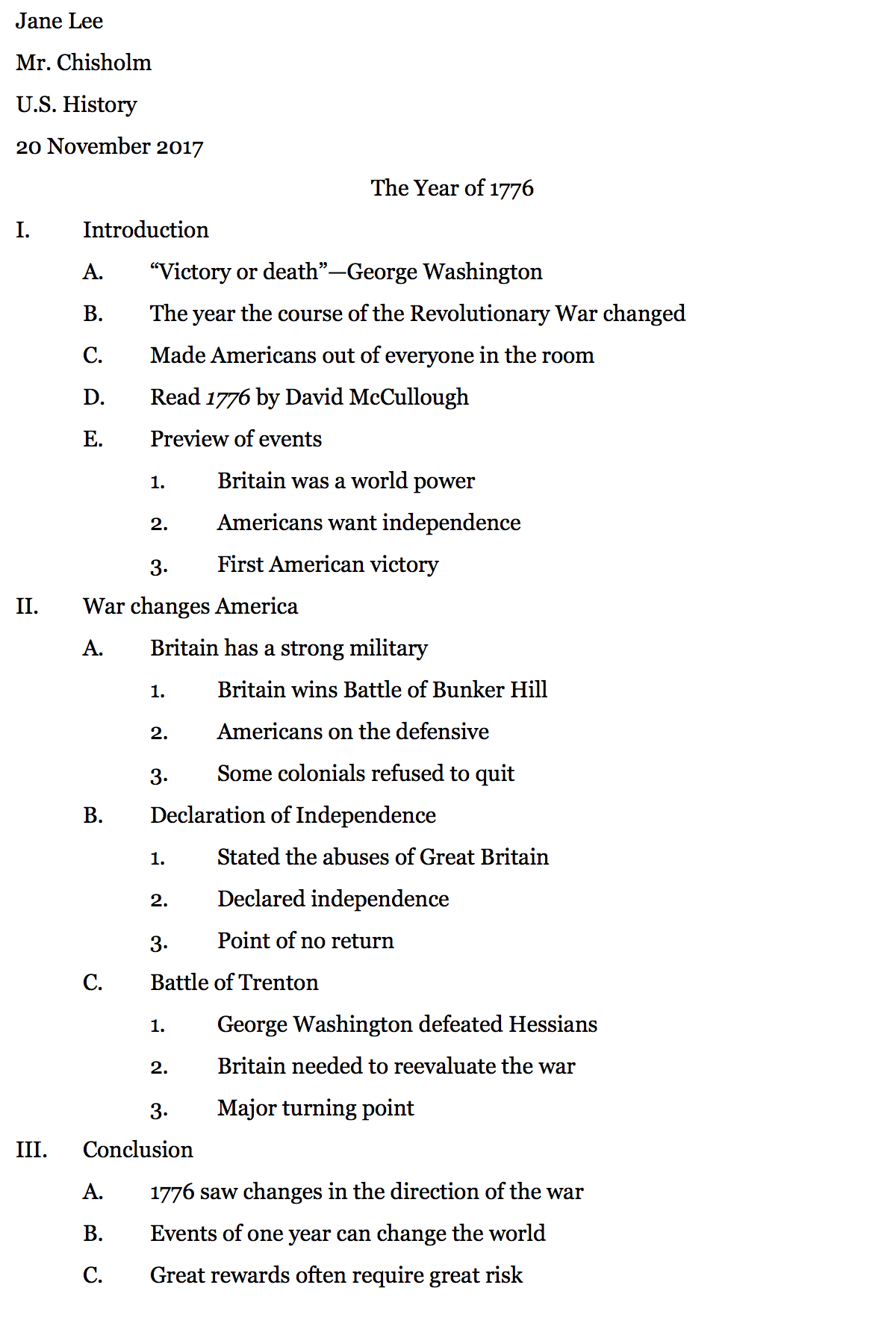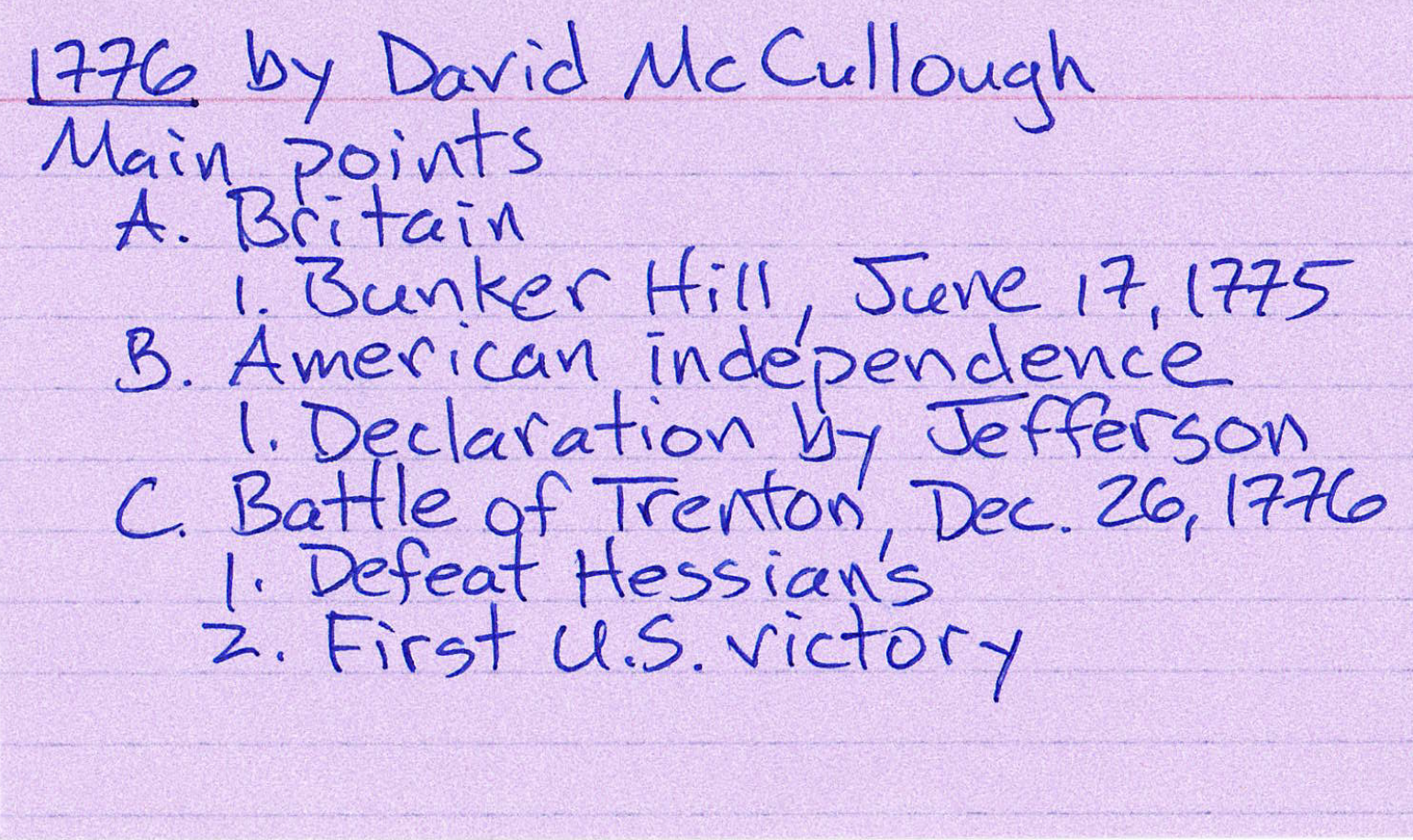Speeches ⁄ Public Speaking
Purpose:
- Students will learn how to organize and prepare a speech.
- Students will learn techniques for presenting information to an audience.
Goals:
- Students will present information to an audience in an organized, professional manner.
- Students will use body language and verbal skills to effectively communicate information to an audience.
Overview
Students will read a book from a time period in U.S. History and communicate the main ideas of that book to an audience.
Step One
Students will read a book on a topic from United States History. As they read, they should fully complete the Reader's Notes worksheet to compile information to present to the audience when they give their speech. While taking notes, students should think about how they want to organize the information they collect.
Since an audience will hear a lot of information, it helps to organize a speech into a pattern. There are three main patterns: chronological, topical, and cause and effect.
Chronological Order
Chronological means that events are presented in the order in which they occur.
| Life of Gaius Julius Caesar | |
|---|---|
| A. | 72 BCE—Caesar served as a military tribune |
| B. | 60 BCE—Caesar, Crassus, and Pompey formed a political alliance, the triumvirate that dominated Roman politics for many years |
| C. | 45 BCE—Caesar defeats his rivals' armies and becomes the leader of Rome |
| D. | 44 BCE—fearing Caesar's growing power, Senate members assassinate Caesar |
Topical Organization
Ideas are organized according to topics.
| The San Francisco Earthquake | |
|---|---|
| A. | Poor building standards led to structural damage |
| B. | Fires caused more damage than the quake |
| C. | Emergency services were overwhelmed |
| D. | Neighboring cities took advantage of people attempting to relocate |
Cause and Effect
Causes are listed leading to a conclusion, result, or effect.
| Causes of World War II | |
|---|---|
| Causes | |
| A. | World-wide depression |
| B. | Nationalism |
| C. | Conflicting economic systems |
| D. | Racism |
| Effects | |
| E. | World War II begins |
Step Two
Students need to create an outline containing all the important points (3-5) about the subject to present to the audience. An outline should contain phrases, not sentences. It should show enough so the student knows what the speech will look like. This allows the student to quickly organize their thoughts and easily make changes to the structure as needed.
Introduction:
- Attention grabber/Hook: A statement, quote, or fact that catches the audience’s attention.
- Statement of purpose/claim/thesis: A simple statement that explains the main idea of your speech. Everything in the speech should relate to this main idea.
- Significance: Tell the audience why this topic is important.
- Credibility: Tell the audience why you are qualified to give the speech. “I read the book…”
- Preview: List the main ideas that you will discuss so the audience knows what to expect.
Body:
- Main topic: State a fact about your topic.
- Facts, examples, details: Give information that supports your main topic.
- Transition: A statement that moves from one main topic to the next. It should sum up the last idea and introduce the next main topic.
Conclusion:
- Review main points: Restate the main points of the speech so the audience remembers the important parts.
- Restate the purpose/claim/thesis: Let the audience know what you want them to know or believe.
- Final statement: Make a statement that makes your audience think about what you have said. How did your subject affect history? Are there issues still unresolved? What did we gain from that person or event?
Sample Outline
The first sample outline contains what should be included in the outline and how it should look. The second sample outline is a finished product. Requirements:
- The outline should contain 3 to 5 main topics.
- Type the outline on one side of white paper using black ink, and a 12 point font (Times New Roman, Arial, or Courier New).
- Double space evenly throughout the paper.
- Use one inch margins on all sides.
- The outline should be three pages or less.
- Use only regular type—no bold or underlined print.
Sample Outline 1

Sample Outline 2

Step Three
Students should use one 3x5 inch index card to write notes to help them deliver their speech. The index card should contain a brief outline of the speech to remind students the order in which they intend to deliver their information. USE NO MORE THAN 40 WORDS ON THE INDEX CARD. Under no circumstances should a student ever write in complete sentences or write out their speech on the index card. Students will inevitably start to read their speech. Once this happens, it is no longer a speech but a public reading.
Sample Notecard

Step Four
The student should practice the speech and time themselves. The speech should be between one and three minutes. Practice, practice, practice! When the student can recite the speech without thinking about it, they have it down.
Step Five
Students will be randomly called on to sign up for one of three days in which speeches will be presented. On that day, they should give their outline speech to the teacher just before proceeding to the podium.